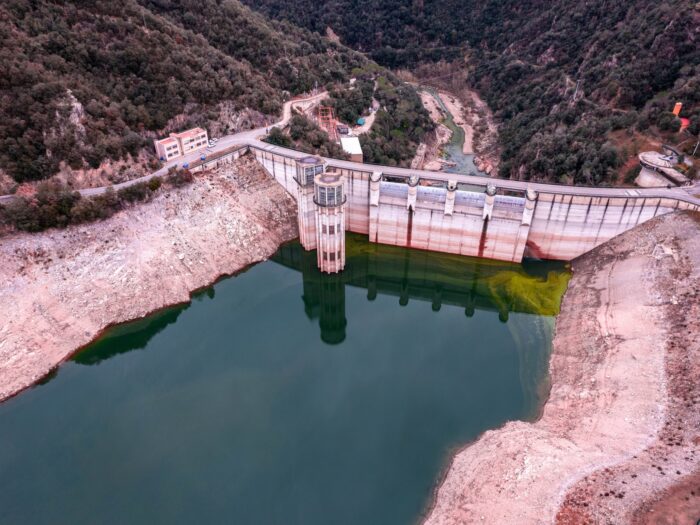Climate Hazards Projected to Hit Companies Hard by 2050s

The world’s largest companies could face annual climate-related costs of $1.2 trillion by the 2050s, according to a new S&P Global analysis.
While dramatic events like wildfires capture public attention with their visceral imagery and immediate destruction, the report reveals that extreme heat, water stress and drought will actually drive the majority of future climate-related costs for businesses.
Current State and Projections
The financial toll of climate change is escalating at an alarming rate, S&P reported. Major global companies could face annual costs from climate hazards reaching $885 billion in the 2030s, rising to $1.2 trillion by the 2050s, and further increasing to $1.6 trillion by the 2090s. These figures represent the potential financial impact on companies in the S&P Global 1200 index, which encompasses approximately 70% of global market capitalization.
These projections are based on the SSP2-4.5 climate scenario, which assumes greenhouse gas emissions will stabilize at current levels until 2050 before declining through 2100. Even with this relatively moderate scenario, global average temperatures are expected to rise by 2.7°C by century’s end, with a “very likely” range between 2.1°C and 3.5°C. Importantly, these cost estimates do not account for inflation and are presented in nominal 2024 prices.
Key Physical Hazards Driving Costs
Not all climate hazards will impact businesses equally. The analysis reveals that three specific hazards—extreme heat, water stress, and drought—will account for a staggering 91% of total costs through the 2050s. By the 2090s, these three hazards will still represent 86% of all climate-related financial impacts under the SSP2-4.5 scenario.
Extreme heat emerges as particularly significant because nearly all corporate assets will experience some exposure to temperatures exceeding local historical 95th percentile maximums. This widespread exposure tp warmer temperatures translates to higher electricity costs, reduced labor productivity, and disruptions to transportation networks across virtually all business sectors, according to S&P.
While chronic conditions like heat and drought dominate the overall financial picture, acute hazards will intensify in specific regions, the report noted. Coastal flooding, for instance, is projected to become dramatically more severe in the latter half of this century. The annual financial impact from coastal flooding for S&P Global 1200 companies is expected to increase nearly 14-fold, from $5 billion in the 2050s to $71 billion in the 2090s.
Recent Evidence of Impact
The theoretical projections of climate impact are already materializing in real-world events. Scientists confirmed that 2024 marked the warmest year on record—and the first calendar year in which global average temperatures exceeded 1.5 degrees Celsius above pre-industrial levels.
In January 2024, catastrophic wildfires devastated heavily populated areas near Los Angeles, providing a stark example of climate hazards’ destructive potential, S&P noted. Preliminary estimates from AccuWeather placed the damage and economic losses from these fires between $250 billion and $275 billion—exceeding the costs of the entire 2020 wildfire season. The human toll was equally devastating, with at least 29 deaths and more than 18,000 structures damaged or destroyed, per the report.
Most Impacted Industries
The financial burden of climate change will not be distributed equally across industries. By the 2050s, the utilities sector is projected to bear the heaviest financial toll, with annual costs reaching a staggering $244 billion, according to S&P. This stands in stark contrast to the health care sector, which faces the lowest projected impact at $31 billion annually.
On a per-company basis, the disparity becomes even more pronounced. While the average company across all industries in the S&P Global 1200 is expected to incur approximately $1 billion in annual climate-related costs by the 2050s, electric utilities face a much grimmer outlook. An average electric utility company is projected to shoulder $4.6 billion in annual costs—more than four times the cross-industry average. Similarly, multi-utilities companies that provide multiple services such as electricity and gas are expected to face around $3.9 billion in annual costs per company.
Regional Variations in Risk
Geographic location plays a crucial role in determining which climate hazards pose the greatest threats to power generation facilities, the report stated.
Power plants in South Asia and Sub-Saharan Africa face heightened vulnerability to pluvial floods—flooding caused by heavy rainfall—compared to facilities in other regions. Meanwhile, power generation facilities in Latin America and the Caribbean, as well as the Middle East and North Africa, confront significantly higher risks from drought conditions.
These regional differences highlight the need for location-specific adaptation strategies rather than one-size-fits-all approaches to climate resilience, S&P recommended.
Industry-Specific Challenges
For utilities, water stress is projected to account for 46% of the sector’s total climate-related costs by the 2050s, slightly exceeding the impact of extreme heat at 41%. This disproportionate vulnerability to water issues stems from the sector’s fundamental operational requirements. Electric utilities that operate steam-driven turbines depend heavily on reliable access to substantial volumes of fresh water. The generation process typically involves boiling water to create steam that drives turbines, making consistent water availability essential for continuous operations.
Hydroelectric power generation faces its own set of water-related vulnerabilities, the report said. Low water levels in reservoirs and dams can significantly disrupt electricity production, creating a direct link between drought conditions and reduced generation capacity. This vulnerability is particularly concerning for regions already projected to experience increased drought frequency, such as Europe, where countries like Spain are expected to spend 41% of the 2050s decade under severe drought conditions, the report added.
Current Risk Management Practices
As climate hazards intensify, companies are increasingly incorporating physical risk assessments into their strategic planning. The utilities sector has emerged as a leader in this area, with 94% of electric utility companies analyzing acute physical risks such as extreme weather events in their climate assessments. However, a significant gap exists between risk identification and financial planning—only 62% of these companies take the crucial next step of identifying potential financial impacts from these risks, according to the report.
This disconnect between risk awareness and financial quantification represents a critical vulnerability for businesses. Without translating physical hazards into financial terms, companies may underestimate the capital requirements needed for adaptation measures and resilience investments, S&P noted.
Adaptation Planning
Despite growing awareness of climate risks, only 35% of companies have disclosed specific adaptation plans that address location-specific vulnerabilities of their operations. The utilities sector demonstrates more advanced preparation, with 58% having developed such plans—significantly higher than the cross-industry average.
This disparity in adaptation planning reflects varying levels of perceived vulnerability across sectors. Utilities, with their extensive physical infrastructure and critical dependence on stable environmental conditions, have stronger incentives to develop robust adaptation strategies than companies in sectors with less direct exposure to climate hazards.
The financial case for adaptation is compelling. Research by S&P Global Sustainable and GIC found that investments in green and cool roofs—which use vegetation or heat-reflective materials to reduce building heat absorption—can save building owners $7.45 for every $1 spent when combined with strong policy support and timely deployment.
View the full report here. &










